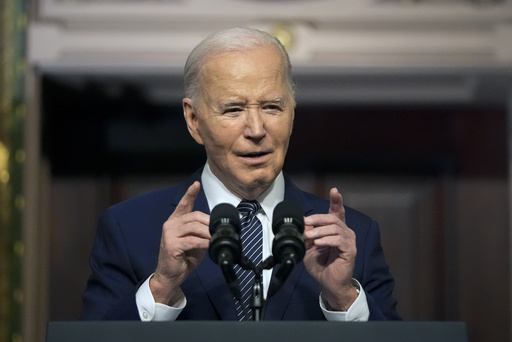WASHINGTON (AP) — President Joe Biden will announce his latest effort to broaden student loan relief next week for new categories of borrowers, according to three people familiar with the plans, nearly a year after the Supreme Court foiled his administration’s first attempt to cancel debt for millions who attended college.
Biden will detail the plan Monday in Madison, Wisconsin, where the flagship campus of the University of Wisconsin is located. The actual federal regulations — outlining who would qualify to get their student loan debt reduced or eliminated — are not expected to be released then, said the people, who were granted anonymity to detail a proposal not yet made public.
Much of the specifics that Biden will discuss Monday have long been telegraphed through a negotiated rulemaking process at the Department of Education, which has worked for months to hash out the new categories of borrowers. The president announced immediately after the Supreme Court decision that Education Secretary Miguel Cardona would undertake the process because he would have the power under the Higher Education Act to waive or compromise student loan debt in specific cases.
Still, the effort seeks to make good on Biden’s promise after the Supreme Court struck down his initial plan in June, a $400 billion proposal to cancel or reduce federal student loan debt that a majority of justices said required congressional approval. Biden called that decision a “mistake” and “wrong.”
And the fresh announcement on student loan relief, a vital issue for younger voters, could help energize parts of Biden’s political coalition who have become disillusioned over his job performance — people whose support the president will need to defeat presumptive Republican presidential candidate Donald Trump this year.
The plan that Biden will detail is set to expand federal student loan relief to new yet-targeted categories of borrowers through the Higher Education Act, which administration officials believe puts it on a stronger legal footing than the sweeping proposal that was killed by a 6-3 court majority last year. The planned announcement from Biden was first reported by the Wall Street Journal.
“This new path is legally sound,” Biden said in June. “It’s going to take longer, but, in my view, it’s the best path that remains to providing for as many borrowers as possible with debt relief.”
Biden’s latest attempt at cancellation is expected to be smaller and more targeted than his original plan, which would have canceled up to $20,000 in loans for more than 40 million borrowers. Details of the new plan have come into focus in recent months as the Education Department brought its ideas to a panel of outside negotiators with an interest in higher education, ranging from students to loan servicers.
“President Biden’s expected additional executive action will greatly reduce the burden of student loans for millions of Americans,” Senate Majority Leader Chuck Schumer, D-N.Y., said Friday. “There is always more work to be done to alleviate the burden of student loan debt. And we will not stop until crippling student loan debt is a thing of the past.”
Through that process, the agency laid out five categories of borrowers who would be eligible to get some or all of their federal loans canceled. The plan is focused on helping those with the greatest need for relief, including many who might otherwise never repay their loans.
Among those targeted for help are individuals whose unpaid interest has snowballed beyond the size of the original loan. The proposal would reset their balances back to the initial balance by erasing up to $10,000 or $20,000 in interest, depending on a borrower’s income.
Borrowers paying down their student loans for decades would get all remaining debt erased under the department’s plan. Loans used for a borrower’s undergraduate education would be canceled if they had been in repayment for at least 20 years. For other types of federal loans, it’s 25 years.
The plan would automatically cancel loans for those who went to for-profit college programs deemed “low-value.” Borrowers would be eligible for cancellation if, while they attended the program, the average federal student loan payment among graduates was too high compared to their average salary.
Those who are eligible for other types of cancellation but haven’t applied would automatically get relief. It would apply to Public Service Loan Forgiveness and Borrower Defense to Repayment, programs that have been around for years but require infamously difficult paperwork.
Under pressure from advocates, the department also added a category for those facing “hardship.” It would offer cancellation to borrowers considered highly likely to be in default within two years. Additional borrowers would be eligible for relief under a wide-ranging definition of financial hardship.
A series of hearings to craft the rule wrapped up in February, and the draft is now under review. Before it can be finalized, the Education Department will need to issue a formal proposal and open it to a public comment period.
The latest attempt at cancellation joins other targeted initiatives, including those aimed at public service workers and low-income borrowers. Through those efforts, the Biden administration says it has canceled $144 billion in student loans for almost 4 million Americans.



